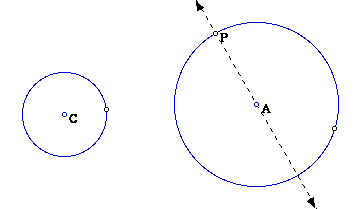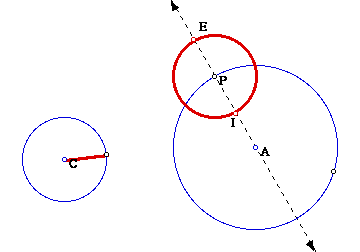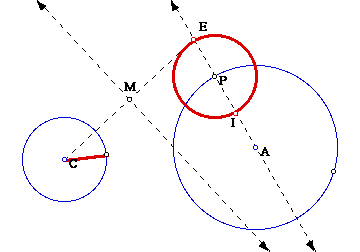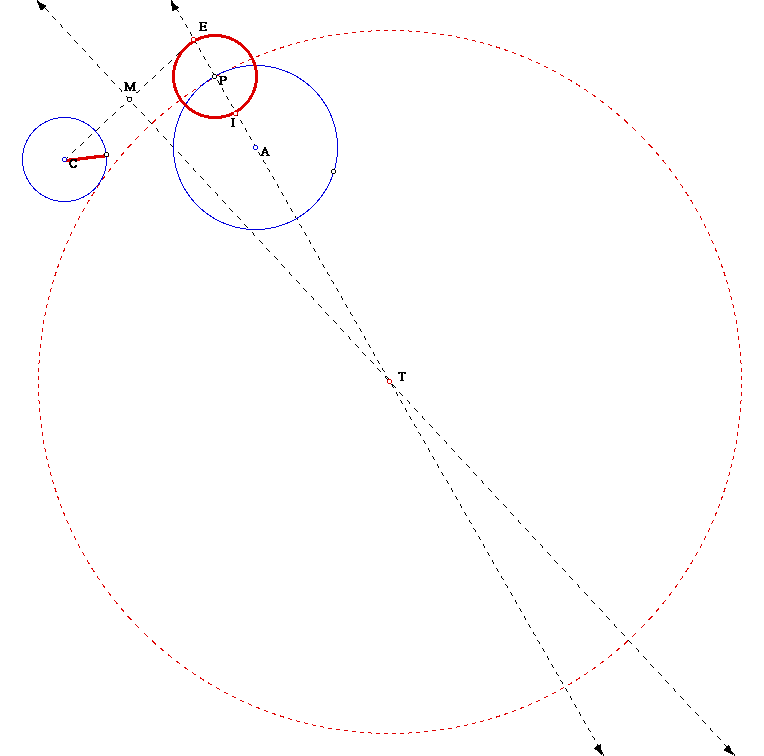

First, given two arbitrary circles, we will construct a circle that is tangent to both of the original circles.

Next, construct an arbitrary point on one of the circles. This point is labelled point P above. This will be one of the points of tangency to the circles.
Now construct the line AP (Shown here in black.).

Now construct a circle with center at P and a radius equal to the radius of circle C. (Radius of circle C and the newly constructed circle shown in red). I labelled the points of intersection between the new circle P and the line AP as points E (exterior) and I (interior).

Next construct the line segment CE. This will act as the base of an isosceles triangle. The vertex opposite the base of this triangle will be the center of our desired tangent circle. So construct a perpendicular bisector for CE. (Each is shown in dashed, black line).

Now find the point of intersection between the perpendicular bisector (line M) and the line AP. This will be the center of our desired circle. I labelled it point T (Tangent Circle). So from this point, construct a circle with radius TP.

Now hide all of the construction figures, leaving only the original circles and the newly constructed circle.

Now let's investigate what happens
as we move the original circles or change their size.
(You must have GSP on your computer in order to conduct this investigation.)
It is fairly easy (at times) to determine what the locus of point T (center of the tangent circle) is from these investigations. An opportunity for willing students should be given to try to explain why the locus of point T is what it is based on whether the original two circles are intersecting or non-intersecting (external to each other, internal to each other, concentric circles).
This type of exploration is generally fun.